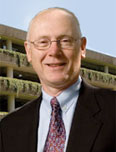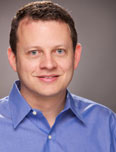Distinguished Achievement in Industry (2 honorees)
Steven Rogel, ’65 BS Chemical Engineering
 The forest products industry plays a vital role in our economy, with annual US revenues of more than $75 billion. As CEO of Willamette Industries and later Weyerhaeuser, Steven Rogel is one of the industry’s most respected and well-known leaders. During his tenure, he guided Willamette Industries to the top of the market and transformed Weyerhaeuser into one of the largest forest products companies in the world.
The forest products industry plays a vital role in our economy, with annual US revenues of more than $75 billion. As CEO of Willamette Industries and later Weyerhaeuser, Steven Rogel is one of the industry’s most respected and well-known leaders. During his tenure, he guided Willamette Industries to the top of the market and transformed Weyerhaeuser into one of the largest forest products companies in the world.
After graduating with a bachelor’s degree in chemical engineering from the University of Washington, Rogel worked at paper companies in Washington, Mississippi and Canada before landing at Willamette Industries. There, he ascended from technical director to CEO. Under Rogel’s guidance, Willamette set the bar for efficiency and engineering and posted revenues well above the competition. His success caught the eye of Weyerhaeuser’s board of directors, who approached Rogel to bring change to the company. He joined Weyerhaeuser as CEO in 1997 and retired as chairman in 2009. Credited by colleagues for driving innovative engineering and technical solutions at all levels of the company, his philosophy of “implementing one high return engineering project after another” moved Weyerhaeuser from mid-percentile performance to a global industry leader.
Rogel currently serves on the boards of Union Pacific Corporation, Kroger Company and Energy Solutions. He has previously served on the boards of the Washington Pulp and Paper Foundation, the American Forest & Paper Association, and the World Forestry Center. His commitment to engineering education resulted in a partnership between UW and Weyerhaeuser that continues today. His awards include the Global CEO of the Year by Pulp & Paper and PPI magazines, Executive Papermaker of the Year by PaperAge magazine, and Company of the Year three times by Institutional Investor magazine.
Richard "Dick" Sandaas, ’60 BS Mechanical Engineering

Nationwide, mobility-impaired bus riders enjoy safe, reliable transportation due to curbside wheelchair lifts developed in Seattle. Richard “Dick” Sandaas led the development and implementation of this technology. This hallmark of his career was accompanied by his work in advancing program management techniques for major wastewater and transit infrastructure projects. His professional and personal achievements have benefited the nation’s disabled, the regional environment and its transportation system, and the public works construction industry.
As director of technical services, and later as executive director for Metro, Sandaas oversaw more than $2 billion in public infrastructure projects. Described as an “extraordinary engineer who created lasting legacies in a variety of hugely important roles,” Sandaas and his work on the downtown bus tunnel and other high-profile projects expanded and enhanced Metro’s reputation in public works projects. Throughout his career, Sandaas gained a reputation as the “go-to guy” when projects went astray. When the Kingdome reconstruction project became mired in trouble, Sandaas was called in. He quickly developed a plan that attained an early reopening of the stadium.
The success of Sandaas’ program management and contracting approach led to a concept called “Modern Contracting Practices.” These consisted of top quality engineering, state of the art contracting techniques, and a proactive owner with an empowered project team. He worked to expand these practices nationally by participating on professional committees, making presentations at industry forums, serving on major project review panels, and mentoring students. He also co-authored a guide with the Associated General Contractors of America and the American Consulting Engineers Council to advance their use. The concept has been widely adopted in the public works sector. Sandaas’ influence also extends to the classroom, where his management innovations are used in public administration curricula.
Sandaas’ honors include the Engineer of the Year Award from the Consulting Engineers Council of Washington, and a Top Ten Public Works Leader of the Year award from the American Public Works Association. Throughout his career he has been active in his community, serving as an elected official and as a board member of a number of civic organizations.
Distinguished Achievement in Academia
Anne Condon, ’87 PhD Computer Science
 Anne Condon is the Head of the computer science department at the University of British Columbia (UBC). Condon’s current research focuses on computational prediction of RNA and DNA structure and folding pathways. She regularly collaborates with molecular biologists and chemists to design and program DNA and RNA molecules with novel functions. Condon’s doctoral dissertation on game-like computational models won an ACM Distinguished Dissertation award, presented to the best one or two dissertations in the nation.
Anne Condon is the Head of the computer science department at the University of British Columbia (UBC). Condon’s current research focuses on computational prediction of RNA and DNA structure and folding pathways. She regularly collaborates with molecular biologists and chemists to design and program DNA and RNA molecules with novel functions. Condon’s doctoral dissertation on game-like computational models won an ACM Distinguished Dissertation award, presented to the best one or two dissertations in the nation.
Condon is a distinguished academic committed to advancing her field. She is equally passionate about increasing the participation of women in computing research. Condon was a longstanding member of the Computer Research Association’s Committee on Women in Computer Science and Engineering (CRA-W) which implements research mentoring, community building, and information sharing projects. She coordinated the Distributed Mentoring Project, which matches undergraduate women with mentors. She held the NSERC/General Motors Canada Chair for Women in Science and Engineering for British Columbia and the Yukon (2004-2009). She won the 2010 Computing Research Association's Habermann Award for outstanding contributions aimed at increasing the participation and successes of underrepresented groups in the computing research community.
Condon received her BSc degree from University College Cork, Ireland and her PhD from the UW. She was a faculty member at University of Wisconsin at Madison from 1987 until 1999 and Associate Dean in the Faculty of Science at UBC from 2007 to 2010. In addition to the dissertation award, Condon has won an NSF National Young Investigator Award and the University College Cork Distinguished Alumna Award.
Distinguished Service
Bonnie J. Dunbar, ’71 BS, ’76 MS Materials Science & Engineering
 A veteran of five space missions as a NASA Mission Specialist Astronaut, Dr. Bonnie J. Dunbar flew aboard the Space Shuttles Atlantis, Challenger, Columbia and Endeavor. She served twice as a Payload Commander and was on the first US-Russian docking mission. Previously she served as a NASA Mission Controller, and held research and engineering positions with the Boeing Co., Harwell Laboratories in the UK and Rockwell International. Following her flight career, Dunbar served seven years in the NASA Senior Executive Service. After retiring from NASA in 2005, she served as President and CEO of The Museum of Flight (MOF) in Seattle until 2010.
A veteran of five space missions as a NASA Mission Specialist Astronaut, Dr. Bonnie J. Dunbar flew aboard the Space Shuttles Atlantis, Challenger, Columbia and Endeavor. She served twice as a Payload Commander and was on the first US-Russian docking mission. Previously she served as a NASA Mission Controller, and held research and engineering positions with the Boeing Co., Harwell Laboratories in the UK and Rockwell International. Following her flight career, Dunbar served seven years in the NASA Senior Executive Service. After retiring from NASA in 2005, she served as President and CEO of The Museum of Flight (MOF) in Seattle until 2010.
Dunbar’s contributions to aerospace are truly ground-breaking, and her passionate commitment to youth education and the promotion of women in engineering is inspirational. Starting at UW, Dunbar helped organize a secondary school visitation program, taking science demonstrations into the classroom and was part of the first UW “Women in Engineering” conference. Throughout her career Dunbar has promoted engineering as a career field and advocated for K-12 science education. At NASA, she played a key role in expanding the Space Settlement Design Competition and the Texas Aerospace Scholars Program for high school students, and in leading the Zero-gravity Parabolic flight program for engineering undergraduates. She championed MOF educational initiatives including The Aviation Learning Center, The Challenger Learning Center, Washington Aerospace Scholars, the Aerospace Camp Experience and the Raisbeck Aviation High School to be built on the MOF campus. Dunbar is a role model and never misses an opportunity to inspire students to reach for the proverbial stars.
Dunbar holds a doctorate in mechanical/biomedical engineering from the University of Houston. She is a member of the National Academy of Engineering, a Fellow of several technical societies, and has received numerous awards and honors.
Early Career
Greg Badros, ’98 MS, ’00 PhD Computer Science & Engineering
 At age seven, Greg Badros got his first computer, a Commodore Vic-20. By age fourteen, he had published his first professional article ("GEOS Directory Printer") in COMPUTE!'s Gazette. Greg went on to Duke University where, in his junior year, his team placed first in the US in the highly prestigious ACM International Collegiate Programming Contest. That success helped him land a summer internship with the Excel group at Microsoft. He graduated from Duke magna cum laude with a bachelor of science in mathematics and computer science.
At age seven, Greg Badros got his first computer, a Commodore Vic-20. By age fourteen, he had published his first professional article ("GEOS Directory Printer") in COMPUTE!'s Gazette. Greg went on to Duke University where, in his junior year, his team placed first in the US in the highly prestigious ACM International Collegiate Programming Contest. That success helped him land a summer internship with the Excel group at Microsoft. He graduated from Duke magna cum laude with a bachelor of science in mathematics and computer science.
Immediately after college, Greg founded the engineering team of Transworld Numerics, Inc. where he worked as senior research scientist. In the fall of ’96 he started the Ph.D. graduate program in the Department of Computer Science & Engineering at UW. While at UW he received an NSF Graduate Research Fellowship. Greg tied a department record by finishing his PhD 3 years and 8 months after starting the program. Although it took 11 years, his Ph.D. thesis on constraint algorithms applied to user interfaces recently made its first appearance in a consumer product: Apple adopted the Cassowary algorithm into the UI builder in its latest version of OS X, Lion.
After UW, Greg worked at Go2Net (later acquired by InfoSpace, Inc.) as Chief Technical Architect. He went on to join the systems lab at Google and then led the AdSense engineering team in that advertising business’s growth from $200 million to over $4 billion per year. Later at Google, as senior director of engineering, he led several of the consumer apps including Gmail, Calendar, and Reader.
In 2009, Greg joined Facebook as an engineering director where one of his first tasks was to scale the technology behind the advertising systems to hundreds of billions of impressions per day. He is now Vice President for Products & Engineering and leads several key areas at Facebook including advertising, search and data science.